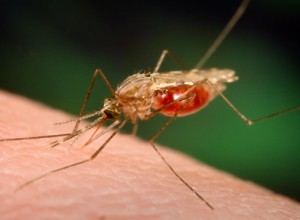Housing architectural designs could reduce malaria cases – Study
 Housing architectural improvements could reduce malaria cases by half in some settings, according to research a published in the open access Malaria Journal.
Housing architectural improvements could reduce malaria cases by half in some settings, according to research a published in the open access Malaria Journal.
As mosquitoes become resistant to insecticides, and malaria parasites resistant to drugs, researchers looked at how making changes to houses might contribute to tackling the deadly disease.
The study, “The evidence for improving housing to reduce malaria: A systematic review and meta-analysis,” was led by the London School of Hygiene & Tropical Medicine in partnership with Durham University and the University of California, San Francisco, whose copy was made available to the Ghana News Agency.
It was funded jointly by the Leverhulme Centre for Integrative Research in Agriculture and Health; US National Institutes of Health; the Bill & Melinda Gates Foundation; Novartis Foundation for Sustainable Development; Medical Research Council and Department For International Development.
The researchers reviewed 90 studies in Africa, Asia and South America, comparing malaria cases in traditional houses (mud, stone, bamboo or wood walls; thatched, mud or wood roofs; earth or wood floors) and modern houses (closed eaves, ceilings, screened doors and windows).
They found that residents of modern homes were 47% less likely to be infected with malaria than those living in traditional houses, and residents were 45-65% less likely to have clinical malaria (fever with infection).
Professor Lucy Tusting from the London School of Hygiene & Tropical Medicine and lead author said: “Housing improvements were traditionally an important pillar of public health, but they remain underexploited in malaria control. Good housing can block mosquitoes from entering homes and prevent them from transmitting malaria to the people who live there.
“Our study suggests housing could be an important tool in tackling malaria. This is a welcome finding at a time when we are facing increasing resistance to our most effective insecticides and drugs. We now need to pinpoint which housing features can reduce mosquito entry in different settings, to incorporate these into local housing designs and to assess the impact on malaria in large-scale field trials.”
Malaria, a life-threatening disease caused by parasites that are transmitted to people through the bites of infected mosquitoes, causes more than half a million deaths per year, mostly among African children.
The authors noted that the effectiveness of improving housing would vary, depending on the location.
While many mosquitoes entered homes to bite humans at night, outdoor malaria-transmission was more common in some places, meaning interventions centered on the home would have less impact.
Prof Steve Lindsay from Durham University and co-author, added: “Improved housing has huge potential to reduce malaria transmission around the globe and to keep malaria at bay where we have eliminated it. Since many of the world’s major vector borne diseases are transmitted indoors, improved housing is likely to be protective against diseases like dengue, leishmaniasis, Chagas disease and lymphatic filariasis.
“In many parts of the tropics development is occurring at an unprecedented rate and the quality of housing is improving too. Across much of sub-Saharan Africa thatched-roofed houses are being replaced by metal-roofed housing. We need to ride this wave of house improvement and develop new ways of protecting people against the insects that transmit so many deadly and debilitating diseases. Good housing should line-up alongside clean water and sanitation as major public health interventions.”
While the studies eligible for inclusion in this new review were of low quality, the authors say the consistency of the findings indicate that housing was an important risk factor for malaria.
Source: GNA
